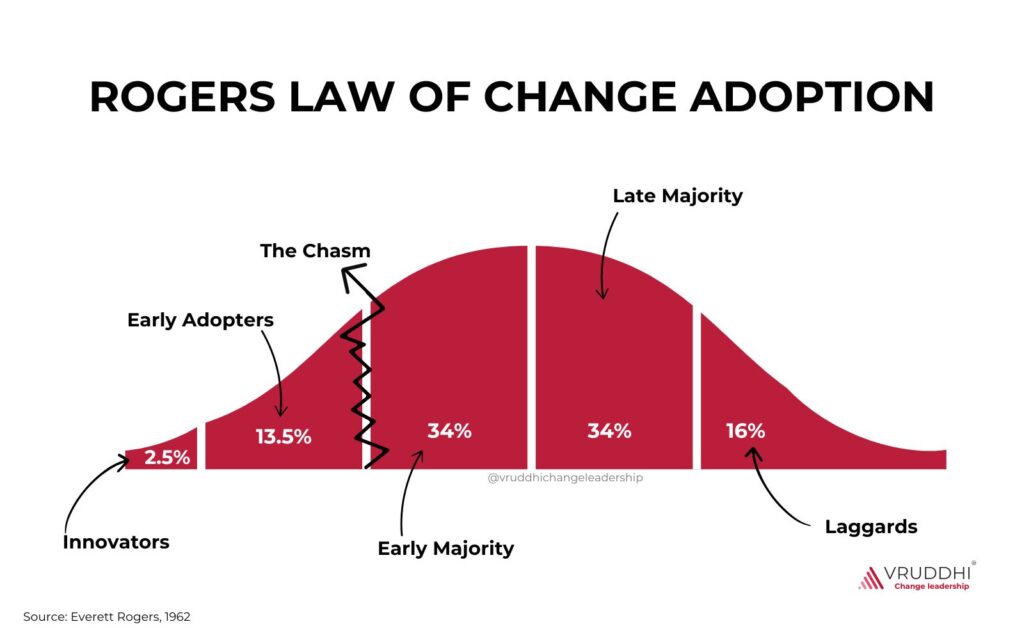Preface:
Business leaders are in a hurry to make change happen and expect instant adoption and results. However, to their anguish, the speed of adoption is often constrained due to human behaviors.
This is where understanding the Rogers’ Law of Adoption (also known as the Diffusion of Innovations Theory) becomes important. The theory introduced by Everett Rogers in 1962 is still very relevant in the context of organisation change. This blog expands on this very important subject.
The Five Categories of Adopters
Everett Rogers identifies five categories of adopters based on their willingness and speed to accept new ideas, products, or changes. These categories are:
- Innovators (2.5%) – These are risk-takers and pioneers who embrace new ideas early, and have a willingness to experiment. They have a high tolerance for uncertainty.
- Early Adopters (13.5%) – These are opinion leaders and influencers who adopt innovations early but after careful consideration. They serve as a bridge between innovators and the wider population.
- Early Majority (34%) – More deliberate in decision-making, they adopt change before the average person but wait until they see proven benefits. They rely on recommendations from early adopters.
- Late Majority (34%) – They are skeptical and resistant; they adopt only when innovation becomes the norm or when peer pressure and necessity force them to change.
- Laggards (16%) – The most resistant group, they adopt only when there are no alternatives left. They tend to have a strong preference for tradition and are often distrustful of change.
The Change Adoption Curve describes the pattern in which people adopt change, moving from Innovators to Laggards at different speeds based on their risk tolerance, openness, and social influence. This is a natural diffusion process, meaning that unless influenced, adoption happens gradually. So the question therefore arises, what can companies do to accelerate change efforts?
What can companies do to accelerate change efforts:
- Highlight the “Relative Advantage”: People adopt change faster if they perceive it as significantly better than the current way of doing things. Companies at their end should therefore clearly communicate the benefits of the change.
- Ensure “Compatibility”: People adopt change faster if it aligns with their current experiences, and workplace culture. It means that change should be positioned as being aligned to current goals and priorities.
- Reduce Complexity: If the change is too complex, adoption slows down. People prefer changes that are easy to understand and implement.
- Enable Trialability: People are more willing to adopt a change if they can test it first with low risk. Implement pilot programs or test runs in a safe environment before full-scale rollout.
- Increase Observability: People are more likely to adopt a change if they see others benefiting from it. Share early wins and success stories from teams who adopted the change.
In Summary
While companies want rapid change, forcing adoption rarely works. By applying Rogers’ principles, organizations can reduce resistance, increase engagement, and create momentum for successful change.
Srikanth is the founder of Vruddhi India, a management consulting firm focused on Change leadership practices. We specialize in guiding companies through the complexities of change in a way that is uniquely personal and customized. You can email me at srikanth.pv@vruddhiindia.com for more information.
